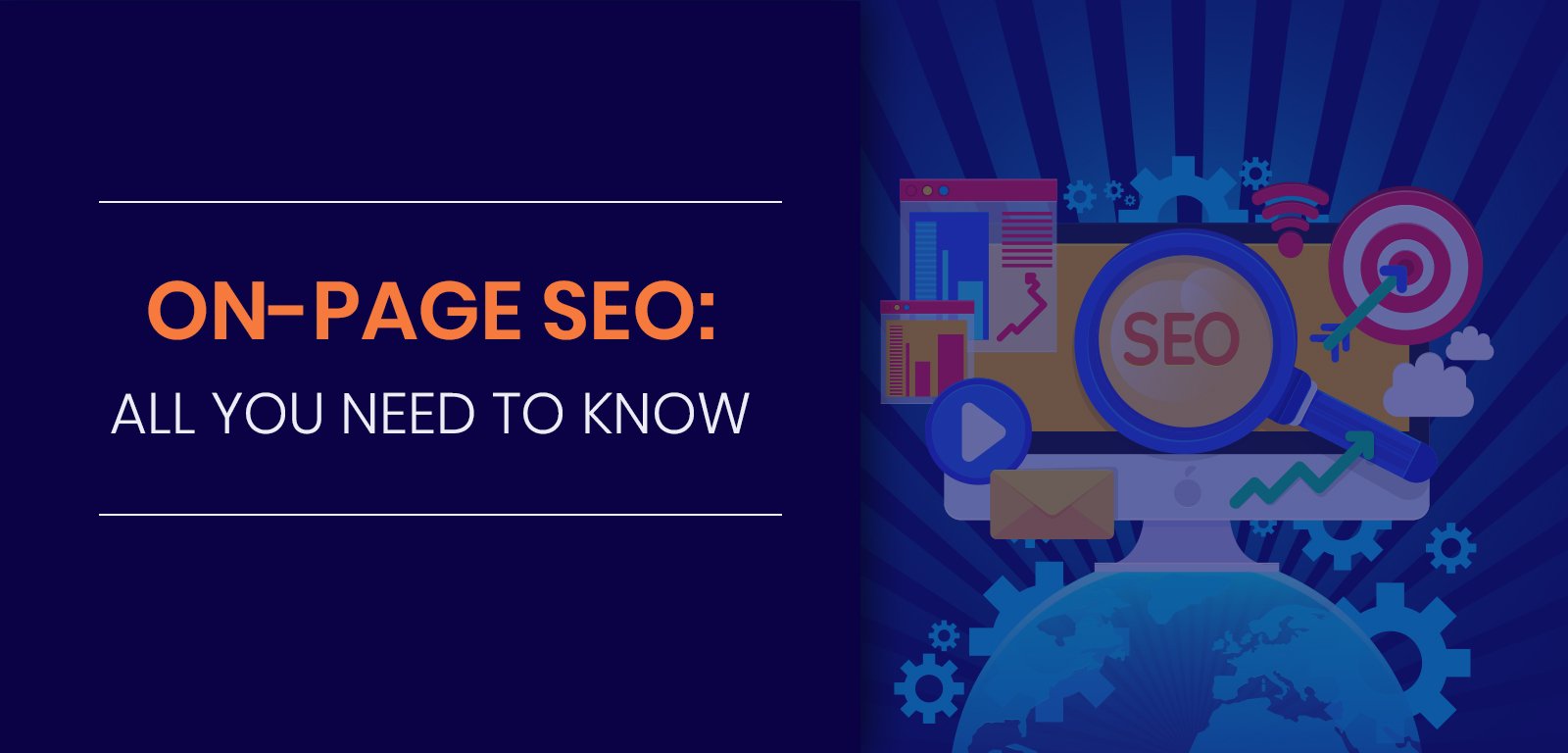ON-PAGE SEO: All you need to know

SEO (Search Engine Optimization) is a technique that involves the process of gaining more traffic on your website through results on Search Engine Pages (Google, Yahoo, Bing, etc.). The O in SEO stands for Optimization, which signifies the part where contents are created and kept on websites for searchers to get on their SERP (Search Engine Result Page). This Optimization takes place in two forms; On-page Optimization and Off-page Optimization. For this article, we will be focusing on On-Page SEO, also known as On-Site SEO.
What is On-Page SEO?
On-Page SEO (also referred to On-Site SEO) is a process that involves the Optimization of websites to enhance its rankings on search engine pages. On-page SEO includes the Optimization of both the content on the website and the HTML source code of the website. In addition to the content and HTML code, it also involves the Optimization of webpage headlines, titles, metadata and images. For a successful On-page SEO, it means your website must be created by the best putting in the knowledge of expertise and building trust in your readers through your websites. With these listed factors, it means every aspect of your webpage must be put into consideration for you to enjoy the success of the Optimization.
Why is On-Page SEO Important?
The world we now live in has shifted from the conventional method of marketing to digital marketing, and it is selling fast due to its effectiveness. With the aid of technology, boundaries have been breached to make marketing even faster and cheaper. This rapid evolution has made people crave for more information, especially when they are searching for it online. This is the reason why Optimization for websites should be done. The great importance that On-page SEO provides is that it allows the search engines (Google, Yahoo, Bing etc.) to have a better understanding of your website and the contents it contains, and it also helps to rank websites in respect to the level of relevance their materials provide.
Click here to know 6 SEO tips to benefit any business
Elements of On-page SEO
Giving proper attention to the following areas will help enhance your website's content and also increase traffic, your rankings and conversion rate.
Relevant, Sharable Contents
Your content is the first and most concerning element of an On-page SEO. For a material that is not appealing to readers, such a website won't get views or clicks as required. This is why it is essential to create contents that are of better relevance, i.e. they are what your readers want. The content must contain valuable information for your targeted readers. The content must also be up to date, and you do not just write and go like that. You must update your materials regularly; by doing this, you keep your website alive and active. Another attribute your content must have its uniqueness, you do not go around copying contents from other websites, make sure you have something new and different to offer. Also, materials are meant to be shared; this is what makes them easier to be seen all over the internet.
Page Title and Meta Description
The second elements are the Page title and Meta description. These two elements work together representing your website on the search engine. Meta-description means the little information that is directly below the website link on a SERP (Search Engine Result Page). The title and Metadata are what you have to describe what your business is about. Considering these two will be a form of description of what your website content is about to a searcher. The meta-description is a short and very appealing description of the contents within the website, with the target of pulling users to visit.
Click here to know Best SEO tools for website analysis
Webpage Optimization
You should perform Optimization for your webpage. This involves optimizing the contents (texts, images and infographics), making the website easy to access and use. Also for other smaller mobile devices like phones and tablets, ensure they can be used to access your page without any problem. Images most especially should be optimized to fit into smaller electronic mobile devices. If a searcher has to get a laptop or desktop before they can access your website, they will go elsewhere to get the information they need.
Links
The fourth element to take note of is the linking on your website. Ensure that proper linking for available sub-sections on your page is done, and also to the homepage. This makes accessing and using the page. This type of connection can be compared to that of a book when a reader is done with a chapter; he/she can still go back to that other page and even progress too. By doing this, a user can navigate around your website, accessing more contents.
We now know what it means to perform On-page SEO and the elements that are involved in the technique. Other factors to take note of are; site speed, keywords usage, and engaging your users. Putting all these into use will ensure that your users keep coming back for more contents on your website.

Thirumalesh Prasad C G (Thiru) is an entrepreneur, Founder, and CEO of Inboundsys. He has over 22 years of experience working for various multinational IT products and services companies in India and abroad. He was a significant member and worked as a user interface architect, designing the user interface for many web applications and products. In addition to running Inboundsys, he is an advisory board member in various other design studios and digital marketing agencies. He is a passionate blogger who loves writing on digital marketing, inbound marketing, lifestyle, philosophy, positive thinking, and motivation.

.jpg?width=800&name=SEO-TOOLS--5-banner%20(1).jpg)